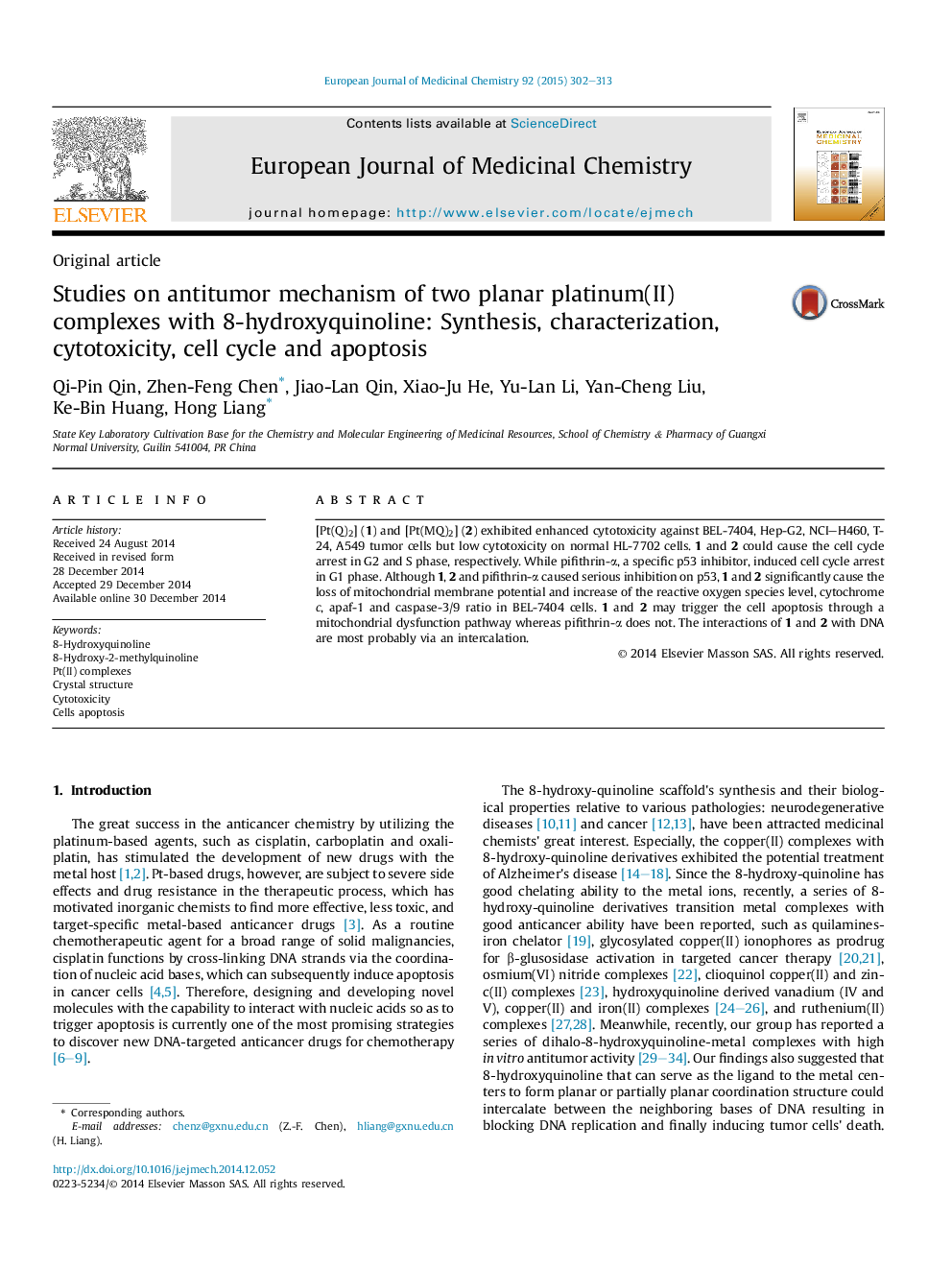| کد مقاله | کد نشریه | سال انتشار | مقاله انگلیسی | نسخه تمام متن |
|---|---|---|---|---|
| 1393998 | 1501124 | 2015 | 12 صفحه PDF | دانلود رایگان |

• The Pt(II) complexes exhibited enhanced cytotoxicity toward tumor cells vs ligand.
• Apoptosis is caused by the Pt(II) complexes via a mitochondrial dysfunction pathway.
• Their antitumor mechanism is different from p53 inhibitor pifithrin-α.
• The platinum(II) complexes interact with DNA most probably by intercalation.
[Pt(Q)2] (1) and [Pt(MQ)2] (2) exhibited enhanced cytotoxicity against BEL-7404, Hep-G2, NCI–H460, T-24, A549 tumor cells but low cytotoxicity on normal HL-7702 cells. 1 and 2 could cause the cell cycle arrest in G2 and S phase, respectively. While pifithrin-α, a specific p53 inhibitor, induced cell cycle arrest in G1 phase. Although 1, 2 and pifithrin-α caused serious inhibition on p53, 1 and 2 significantly cause the loss of mitochondrial membrane potential and increase of the reactive oxygen species level, cytochrome c, apaf-1 and caspase-3/9 ratio in BEL-7404 cells. 1 and 2 may trigger the cell apoptosis through a mitochondrial dysfunction pathway whereas pifithrin-α does not. The interactions of 1 and 2 with DNA are most probably via an intercalation.
Figure optionsDownload as PowerPoint slide
Journal: European Journal of Medicinal Chemistry - Volume 92, 6 March 2015, Pages 302–313